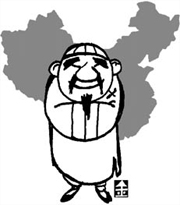The Han mosaic

The name of the Han people, who make up 90.56 percent of the 1.3 billion Chinese, is derived from the river. The Han Dynasty, wherein lies the tradition of the Han people, rose to power at the upper stream of the river, southwest of Shaanxi. The Han Dynasty is considered to have established Chinese civilization.
Outsiders, including the rival Huns, began to call people of the Han Dynasty Hanren. Thus, the concept of the Han people emerged in history for the first time. However, it was the Yuan Dynasty that formally recognized the Han people as an ethnic group.
The Mongolians, who established the Yuan Dynasty, then categorized the Chinese into four castes. At the top were the Mongol rulers. Then were the Semu or “colored eyes” from countries bordering western China, who were trusted collaborators of the Yuan Dynasty.
Third came the Hanren. What is interesting is that Koreans were included here. This third category thus included all people other than the Mongols and the Semu who dwelled north of the Yangtze River.
The last caste was the Manji Caste, or Nanren, literally meaning southern people. It included people from south of the Yangtze River. This caste system went by the order in which the Mongols conquered them. The Nanren were the last conquered people.
Following the Ming and Qing Dynasties and the 1911 Chinese revolution that established a republican form of government, the Han people emerged as the main ethnic group.
However, in reality, the situation is quite complicated. People of different lineages and languages of northern and southern China are lumped together as one ethnic group along with people from regions other than China. In other words, all the Han people are definitely not of the same lineage.
The Han civilization has historically been cosmopolitan. It did not exclude those who were different and was at times highly tolerant.
The current Chinese nationalism, displayed in its dealings with Tibet, is quite aggressive. Just because Tibet is within its territory, it is not right to try to forcibly assimilate its people into the Han civilization.
We hope China will be open enough to give Tibet autonomy.
The writer is a deputy international news editor of the JoongAng Ilbo.
By Yoo Kwang-jong [kjyoo@joongang.co.kr]










with the Korea JoongAng Daily
To write comments, please log in to one of the accounts.
Standards Board Policy (0/250자)